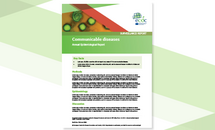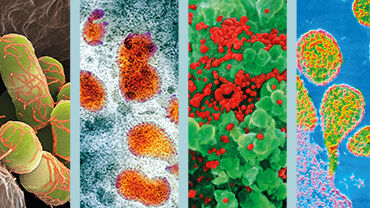Healthcare-associated infections acquired in intensive care units - Annual Epidemiological Report for 2021
In 2021, 11 551 (15.6%) of patients staying in an intensive care unit (ICU) for more than two days presented with at least one of the ICU-acquired healthcare-associated infections (HAI) under surveillance (pneumonia, bloodstream infection or urinary tract infection).
- Of all patients staying in an ICU for more than two days, 10% presented with pneumonia, 8% with bloodstream infection (BSI) and 4% with urinary tract infection (UTI).
- Sixty-six percent of pneumonia episodes were associated with intubation, 38% of BSI episodes were catheter-related, and 97% of UTI episodes were associated with presence of a urinary catheter.
- The most frequently isolated microorganism was Pseudomonas aeruginosa in ICU-acquired pneumonia episodes, coagulase-negative staphylococci in ICU-acquired BSIs, and Escherichia coli in ICU-acquired UTIs.
- Antimicrobial use was empirical in 53% of ‘days of therapy’ (DOTs), directed in 38% of DOTs and prophylactic in 9% of DOTs.
- Fifteen percent of Staphylococcus aureus isolates were oxacillin-resistant (MRSA) and 7% of Enterococcus spp. were glycopeptide-resistant. Resistance to third-generation cephalosporins was reported in 20% of E. coli isolates, 42% of Klebsiella spp. isolates and 46% of Enterobacter spp. isolates. Carbapenem resistance was reported in 12% of Klebsiella spp. isolates, 30% of P. aeruginosa isolates and 85% of Acinetobacter baumannii isolates.
Download

Healthcare-associated infections acquired in intensive care units
- EN - [PDF-761.71 KB]







